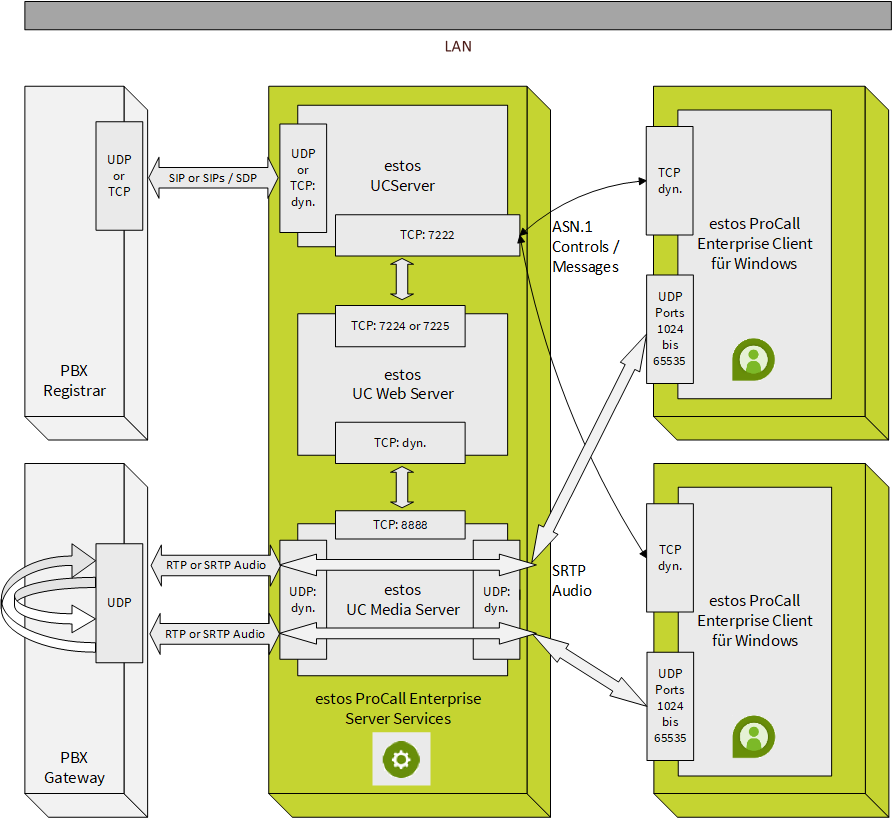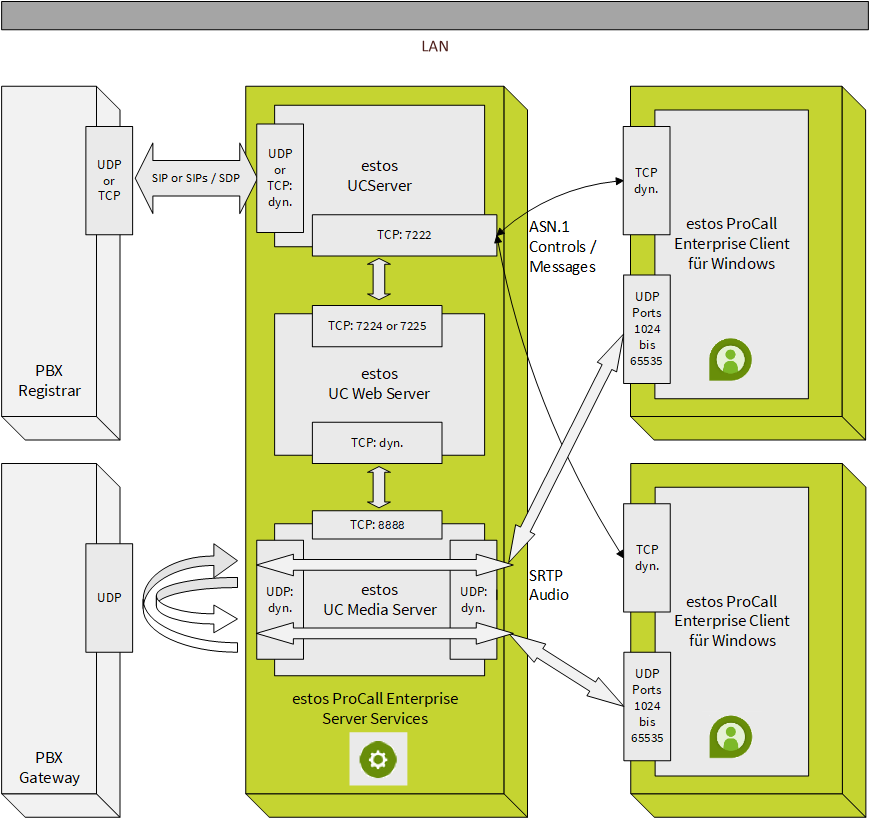SIP calls between two ProCall Enterprise softphone clients for Windows within a LAN
| Update status | August 2023 |
|---|---|
| Product relevance | ProCall 8 Enterprise
|
Scenario
- An estos ProCall Enterprise softphone client for Windows calls an estos ProCall Enterprise softphone client for Windows on its SIP subscriber line.
- Both parties communicate via this connection.
- Both estos ProCall Enterprise clients for Windows are located in the same local network.
- Both users of the estos ProCall Enterprise client for Windows work on the same estos ProCall Enterprise server.
Explanation
This means that the media streams are always routed via the estos UC media server.
Diagram/topology: PBX – UCServer service – ProCall Enterprise clients – SRTP audio/video

The topology diagram shows a typical ProCall Enterprise installation in the LAN (local network), assuming unrestricted communication between all clients and ProCall Enterprise server.
ProCall Enterprise clients connect to ProCall Enterprise server port 7222 (in the installation default) via a dynamically assigned TCP port.
Through this connection, clients exchange requests and events with the server to process telephony events or perform telephony activities..
For the exchange of RTP media packets during a SIP call, each client negotiates a direct connection via UDP with the estos UC media server using ICE Handshake (WebRTC standard).
Ports from the range 1024 to 65535 are used (all ports except well-known ports).
The exchange of RTP media packets between estos UC media server and PBX is agreed in the SDP exchanged between these components.
As shown in the diagram above, a media stream of a client is routed via the server to the telephone system, the telephone system routes this media stream back to the server, which then feeds it to the second client. Depending on the technical possibilities of the telephone system, the paths of the media streams between the estos ProCall Enterprise clients can also be shortened in this scenario. Some telephone systems recognize that the media streams between the communication participants can also be exchanged directly, i.e. they do not have to be switched through the PBX Voice Gateway. In this case, the PBX signals the estos server itself to the estos ProCall Enterprise server in the SDP as the source and destination for audio, and the estos UC media server no longer sends the media streams to the PBX, but to itself (loopback). Depending on the telephone system, this technique is described under a term such as Direct Media, Direct Routing or Media Bypassing. This changes the representation of the media streams as follows:
Diagram/topology: PBX – UCServer service – ProCall Enterprise clients – SRTP audio/video – Direct Media operation

In order to capture the media streams on the estos ProCall Enterprise server for analysis purposes in Direct Media mode, the loopback network adapter must also be included in the capturing process.